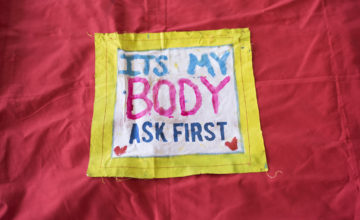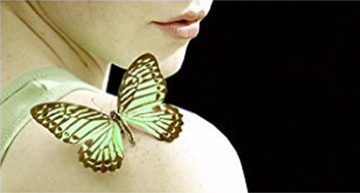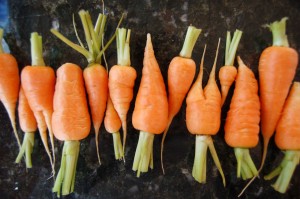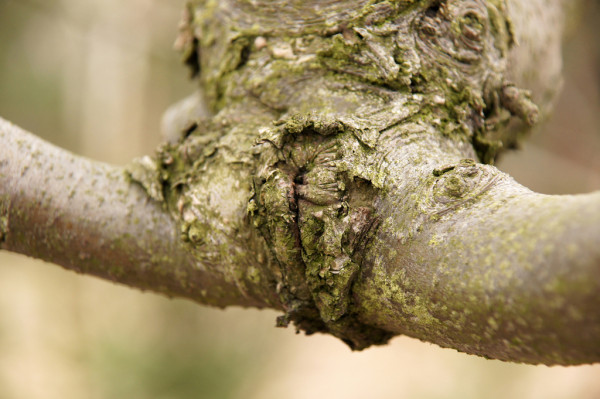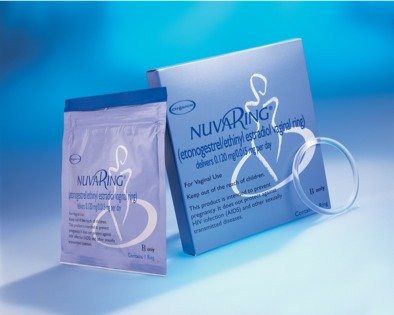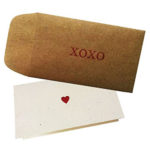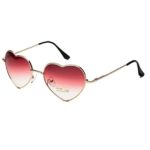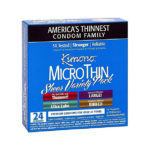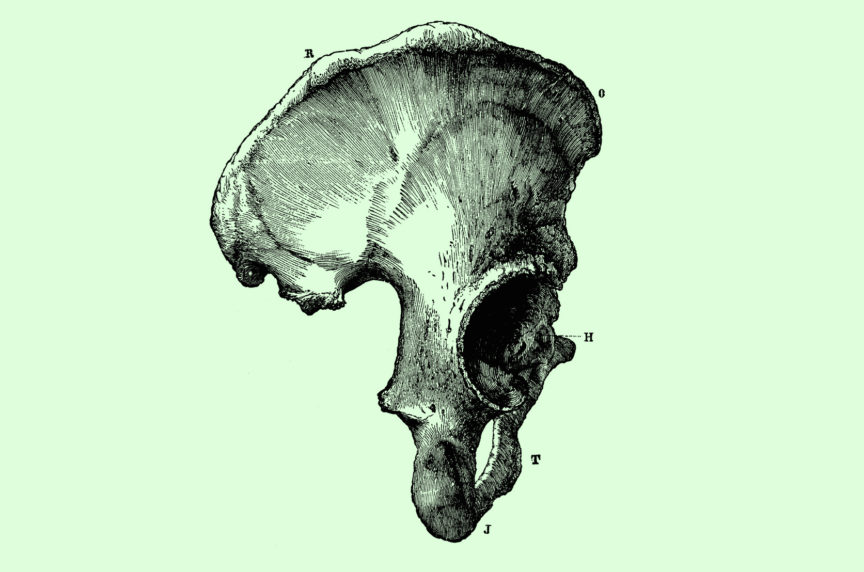
Just because male sexual structures are a bit more, shall we say, obvious, does not mean you can forgo the anatomy lesson. There are important parallels between male and female sexual machinery that will help you understand how to best to use what you’ve got on your own and with your partner, especially if your partner is rocking opposite sex bits. For instance, did you know male sexual anatomy includes a clitoris too?!
Please note: Having certain anatomical parts does not determine one’s sexual orientation or gender identity. And there are certainly exceptions to the biological sex binary, as with intersex people. The below applies to the two typical categories of sexual anatomy — male and female — while trying not to make assumptions about a) who might be interacting with such anatomy or b) how the owner of such anatomy might identify.
penis, a.k.a. the male clitoris: The MVP of male sexual function. This very visible shaft is often considered the corresponding puzzle piece to the vagina. Understandable, but that often leads (straight, cisgender) men and women to discount the importance of her clitoris (especially when it doesn’t seem to actively provide stimulation to his member). But we would all do well to consider that the penis actually incorporates many of the same or similar sexual components that are key to female sexual functioning, including the clitoris.
In the male case, those components may be a little more efficiently organized and consolidated, at least when when you consider penetration: during intercourse, all the parts of the penis/male-clitoris are stimulated simultaneously, which is one reason why penetration tends to be a sure-fire method of orgasm for those with dicks; however, traditional intercourse stimulates only the sides of only some of the female clitoral structures, making orgasm through mere penetration tricky (or even impossible) for their owners.
corpus cavernosum: Within the penis runs this narrow wishbone-shaped erectile tissue much like the female clitoral wishbone, except the male “handle” end is long, about 4 inches (running the length of the shaft, parallel to the urethra), and the two clitoral “Y” legs are short (splitting at the base near the pubic bone). Upon arousal, it fills with blood and becomes bigger, straighter and more sensitive, i.e. erect, just like the female clitoris.
urethra: The tube that runs from the bladder, through the prostate gland and along the length of the penile shaft (where it’s surrounded by spongy erectile tissue), to the urethral opening at the penile tip, through which urine and ejaculate are expelled.
urethral sponge, a.k.a. corpus spongiosum: Like the female urethral sponge, this erectile tissue surrounds the length of the male urethra, responds to stimulation, and fills with blood upon arousal (though it remains much more pliable than the corpus cavernosum so the urethra doesn’t get pinched closed, which would cut off ejaculation). Some consider this the single equivalent of the two clitoral bulbs in female sexual anatomy, as it ends in one bulbous structure within the body just past the base (what’s considered the “root” of the penis). At the other, outermost end, the corpus spongiosum forms the acorn-shaped head or glans, molded over the exterior end of the corpus cavernosum.
penile tip, a.k.a. U-spot: The sensitive, innervated skin around the urethral opening.
penile head or glans: At the outermost end of the penile shaft, the corpus spongiosum forms the acorn-shaped head or glans which is molded over the rounded, exterior end of the corpus cavernosum. Many consider this the equivalent of the female clitoral glans, especially when you consider how both the female and male hoods or foreskins protect these two “heads”. But by stimulating the male glans, you’re also stimulating the exterior end of the corpus cavernosum, which can also be considered an equivalent to the female clitoral head, though in his case it’s not external.
foreskin, a.k.a. male clitoral hood: The retractable sheath of skin attached to the shaft of the penis via the frenulum that serves as a sort of oversized turtle neck: it’s pulled over most if not all of the penile glans when not erect (protecting the naturally moist mucous membrane of the glans), and pulled back during arousal (aiding in both its pleasure and the pleasure of any vaginas that might have invited inside). If the foreskin is removed via circumcision, the membrane of the glans will become tougher and permanently dry, and will probably benefit from the addition of purpose-made lubricant during manual sex, since the foreskin is no longer there to act as a natural moveable stimulation sheath.
frenulum: A highly sensitive band of tissue on the underside of the penis, just under the penile glans, that keeps the foreskin in place. Whether the frenulum is left intact, partially removed or fully removed during circumcision, the area tends to remain a particular pleasure point (albeit to varying degrees).
prostate gland: The smooth, walnut-sized organ located behind the public bone, below the bladder and above the perineum, through which the urethra runs. The prostate produces an alkaline fluid that constitutes up to a third of the contents of ejaculate which helps transport and protect sperm during and after ejaculation. The muscles of the prostate also help expel the ejaculate from the body. When you gently stimulate it via the front wall of the rectum, you’ll feel it get bigger and firmer closer to orgasm. There are even butt plugs, like the Aneros, made specifically for promotion of this gland’s pleasure and good health.
P-spot (for prostate), a.k.a. the male G-spot: The area of the prostate gland that can be felt and stimulated through the top, belly-side wall of the rectum by inserting a finger, fingers, penis or anal sex toy a few inches inside and pressing toward the navel or the back of the pubic bone. (More indirect stimulation of the gland can be achieved by pressing up on the perineum.) Some men find this stimulation incredibly pleasurable, some find that it intensifies orgasm, and some find it downright uncomfortable. However, we suspect some of this discomfort is psychological in nature, as many hetero, cis men (mistakenly) feel that penetration is either too girly, too gay, or too unhygienic. Or else they’re just not doing it right – to do it right, click here.
testicles & scrotum (a.k.a. the male labia): Analogous to the egg- and estrogen-producing ovaries in female sexual anatomy, the testicles are the two reproductive organs which produce sperm and male hormones (like testosterone). The “balls” are housed in the scrotum or scrotal sack, the male equivalent of outer labia (both develop from the same early embryonic tissue), which hang down outside the body (behind the flaccid penis) and may similarly enjoy gentle stroking. Gently pulling the testicles away from the body during arousal may help delay ejaculation.
perineum: The perineum is the short bridge of tissue between the back of the testicles and the anus. Also known universally as the “taint” (it ain’t the balls and it ain’t the asshole). Massage and pressure of the perineum can indirectly stimulate the prostate gland.
anus & rectum: The rectum is the S-shaped tube that serves as the passage way for poo between the intestine and the final exit, the anus. This nerve-rich orifice – which consists of two, fairly snug, ring-like sphincter muscles – is surrounded on all sides by one layer of the pelvic floor muscles, which also surround the other sexual structures. And the prostate gland can be stimulated a few inches inside the anus via the front rectal wall. Thus, it makes sense that the anal area can be an integral part of male genital pleasure and even orgasm. (For more important info on proper stimulation and penetration, click here.)
pelvic floor muscles: A series of muscles stretching from the pubic bone to the tailbone and running between, around and beneath the various sexual structures which, if strong and healthy, provide A) support to these structures and other internal organs, B) urinary and fecal continence, and C) sexual pleasure: they contract in response to sexual stimulation, causing sexual tension, which may eventually get released during the involuntary contractions of orgasm. (To ensure yours are strong and healthy, see this info on Kegel exercises.)




